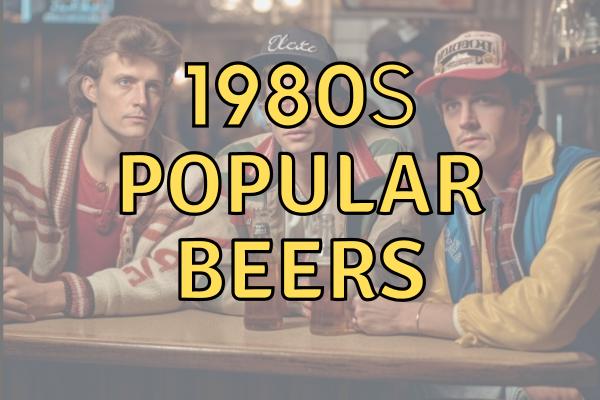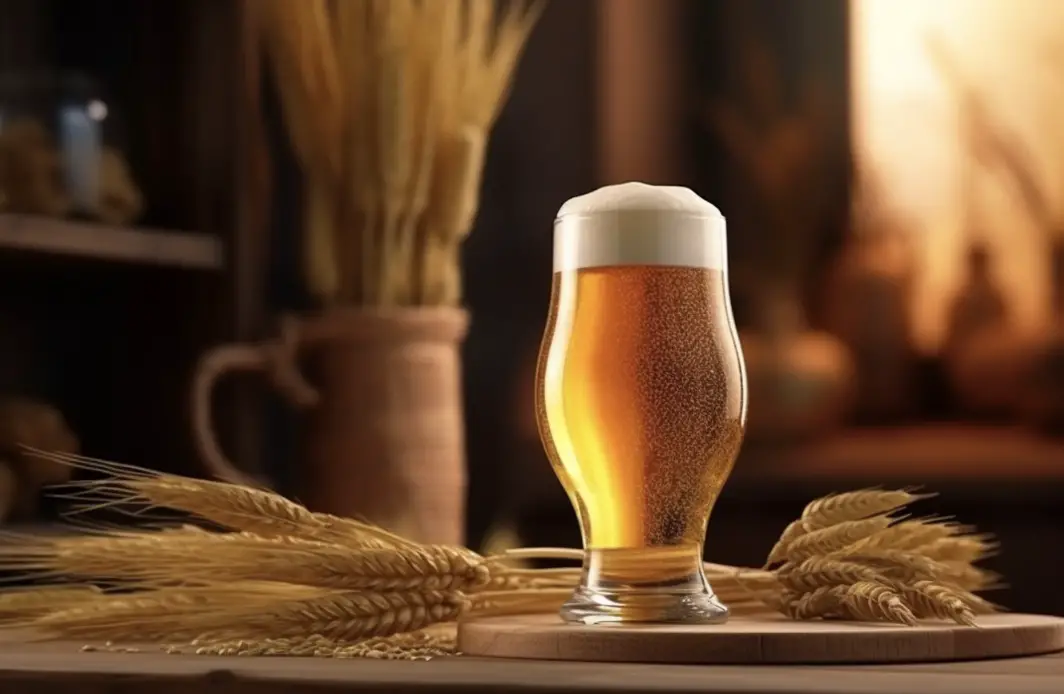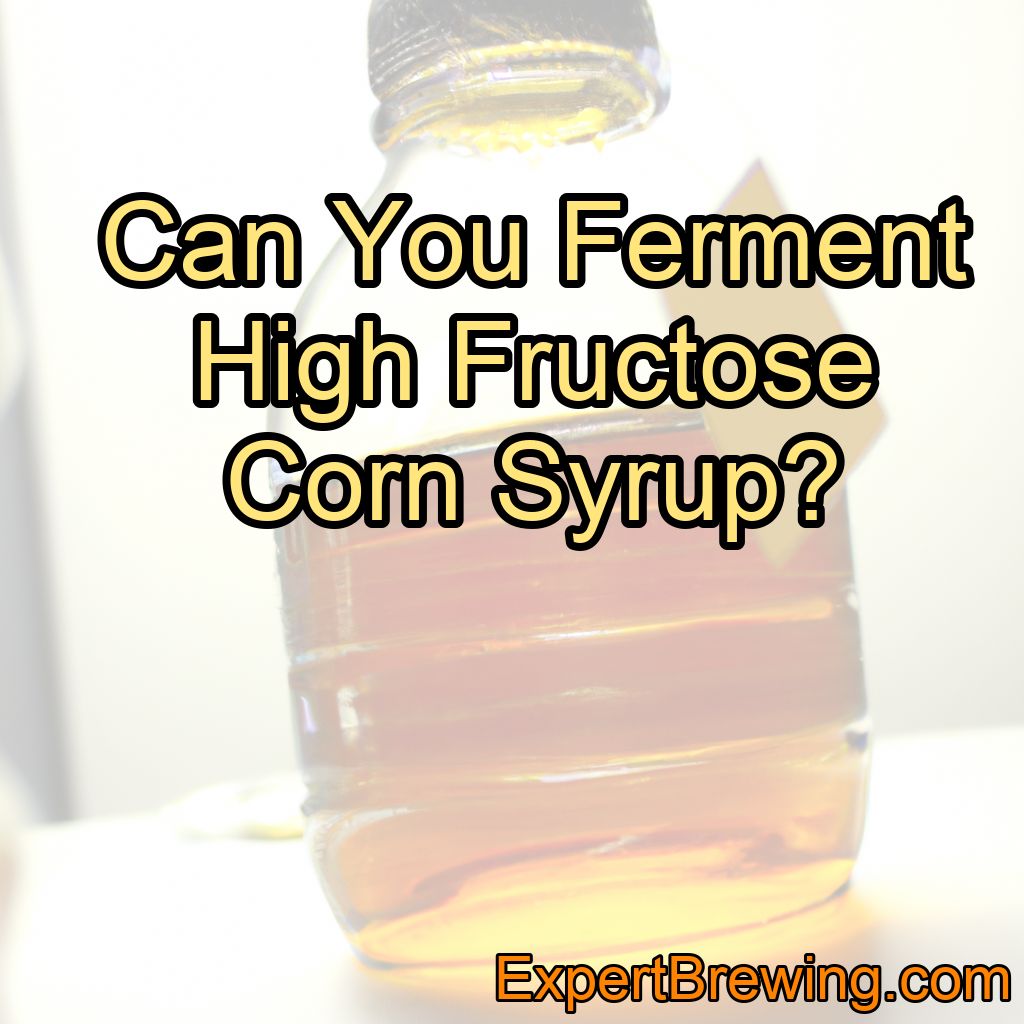Ah, the 1980s – a time of big hair, shoulder pads, and some of the most iconic beer brands that have withstood the test of time. While the neon lights flashed, disco music played, and people partied like there was no tomorrow, a revolution in the world of beer was brewing.
No longer were the classics enough to quench a thirsty partygoer’s palate – instead, a wave of new and exciting beers began to make their mark on the social scene, leading to the introduction of some of the best-known beer brands we see today.
Let’s take a nostalgic trip down memory lane and explore some of the most popular beers that made the 1980s an iconic decade for beer lovers everywhere.
1. Lager: The Beer of the 80s
During the 1980s, the United Kingdom experienced a significant shift in its beer preferences, as consumption of lager overtook that of ale and stout combined by the end of the decade.
Several factors contributed to this trend:
• Lager was perceived as an upmarket drink during the 1960s and 1970s, and clever marketing by big brewers made it more popular. Its market share grew from a mere 29% in 1979 to over half of all beer consumption in 1989.
• As a premium drink, lager initially cost around 35% more than ale; however, by the ’80s, price differences reduced to around 15%. This smaller price gap made lager more affordable and accessible to the mass market.
• With the appearance of cask-conditioned ales in more than three-quarters of pubs by the end of the ’80s, the growing appreciation for real ales also played a role in lager’s popularity.
As a result, the 1980s became known as the era of lager, with brands such as Carling Black Label, Foster’s, and Kestrel Lager topping the charts in terms of popularity and sales.
The public’s change in taste forever influenced the British beer industry and paved the way for the dominance of lager in the UK market. [1][2]
2. Coors: The Bootlegging Craze
The 80s marked a fascinating period for beer enthusiasts, particularly when it came to Coors, which was once an elusive, much sought-after brand.
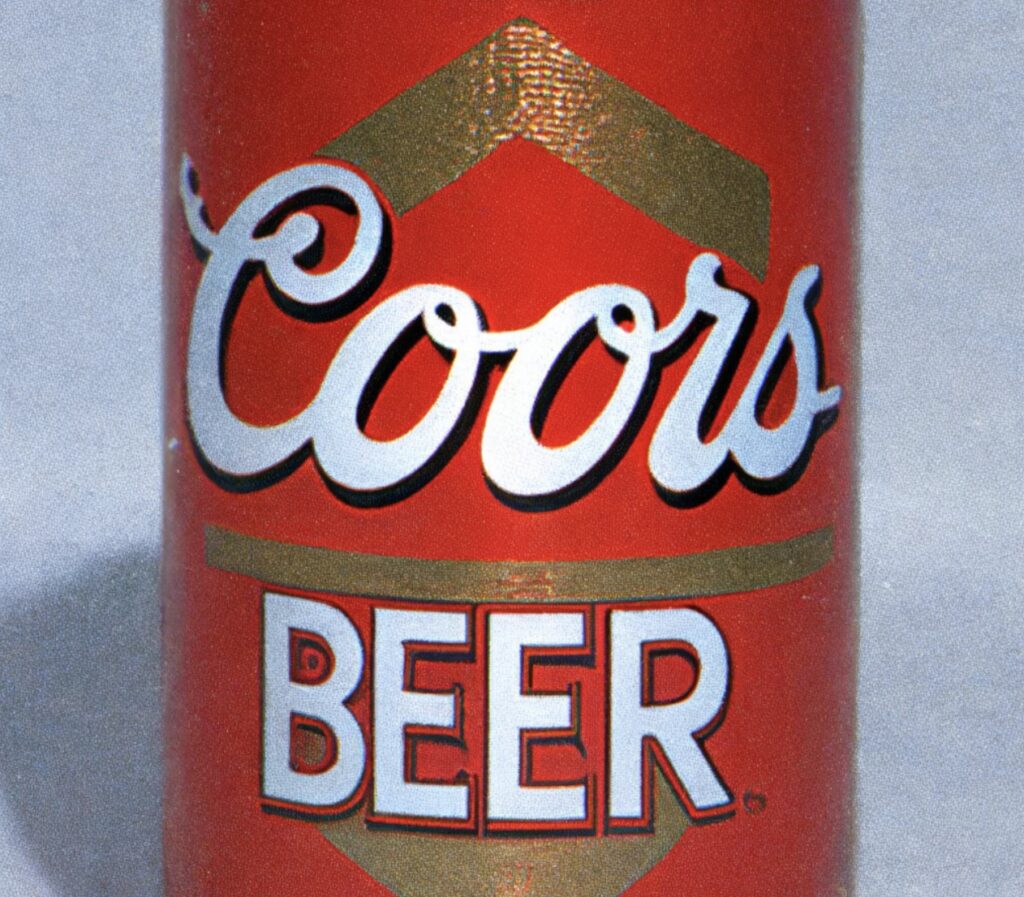
In fact, the Coors bootlegging craze became so popular that it inspired the classic Hollywood blockbuster, Smokey and the Bandit. Here’s why:
– Limited distribution: In the late 70s, Coors was a regional product, made only in Colorado, and due to it not being pasteurized and containing no preservatives, shipping posed certain challenges. This restriction led Coors to be considered highly desirable and challenging to obtain.
– Status symbol: Coors’ exclusivity resulted in people such as Gerald Ford, Paul Newman, and Dwight D. Eisenhower hoarding the brew, which increased its desirability even further.
– Bootleg operations: Before Coors achieved national distribution in the 80s, it was not actually licensed to sell east of the Mississippi. This led to covert smuggling activities on a large scale, giving the beer a kind of ‘forbidden fruit’ appeal at the time.
The staggering demand for Coors, coupled with its exclusivity, contributed to the creation of a beer black market.
Overall, the 80s were a period where Coors’ bootlegging craze reached its peak, not only catapulting the beer’s popularity, but also becoming an integral part of American pop culture. [3][4]
3. Corona: The Luxury Beer
In the 1980s, Corona emerged as a luxury beer on the market with its distinct taste and unique marketing techniques. At a time when beer drinkers typically favored domestic brews, Corona offered an exotic alternative, standing out from its competition.

Here are a few key factors that contributed to the rise of Corona in the 80s:
– Branding: Corona’s eye-catching clear bottle with a lime wedge perched atop quickly became a signature trademark, elevating its status as a fashionable beverage. The importance of the lime wedge transcended mere aesthetics, as it helped accentuate Corona’s unique citrus flavor profile.
– Advertising: Corona cleverly capitalized on the tropical and exotic associations many people had with Mexico. Commercials featuring sun-soaked beaches and people enjoying their Corona helped consumers associate the brand with relaxation and a carefree lifestyle.
– Market positioning: Corona positioned itself as a luxury import, often priced higher than domestic offerings. This higher price tag led many consumers to perceive it as a premium product.
While some critics and beer enthusiasts may have viewed Corona as just another “hula hoop” fad, the brand’s strategic marketing and solid taste profile allowed it to capture the zeitgeist of the era.
The 1980s marked the beginning of Corona’s success story, as it continued to grow in popularity and is recognized today as a leading global beer brand. [5][6]
4. Miller Lite: The Light Beer
Miller Lite: The Light Beer of the 1980s!
- Miller Lite was first introduced by Meister Brau Brewing as Meister Brau Lite, which was later acquired by Miller Brewing Company in 1972.
- The beer is a 4.2% alcohol by volume American-Style Lager that has become an iconic beverage in the United States.
- It was originally launched in 1973 as a response to the increasing health-consciousness of American consumers and has come to be recognized as one of the pioneering light beers in the market.
- In 1982, Miller Lite was faced with major competition from Anheuser-Busch’s Bud Light, which would go on to become more popular in terms of sales by 1994.
- Despite this competition, Miller Lite remained a top-selling beer and won gold medals for Best American-Style Lager or Light Lager at the 2010 and 2014 World Beer Cup.
According to an excerpt from “7 Beers That Defined America Through the Ages,” Miller Lite successfully appealed to the “macho macho men” persona, promoting their product using pro sports players and masculine figures.

Their advertising campaign, “Tastes Great!…Less Filling!” was ranked as the eighth-best advertising campaign in history by Magazine.
These clever marketing strategies undoubtedly contributed to the enduring popularity and commercial success of Miller Lite. [7][8]
5. Growing Appreciation for Real Ales
During the 1980s, the UK experienced a surge in the appreciation for real ales, even though lager took center stage as the preferred beer choice.
“Real Ale” is a term coined by the Campaign for Real Ale (CAMRA) to describe a type of beer brewed from traditional ingredients, matured by secondary fermentation in the container from which it is dispensed, and served without the use of extraneous carbon dioxide. This type of beer is also referred to as cask and bottle-conditioned beer.

The fundamental difference between real ale and other ales is that real ale is required to be unfiltered, unpasteurized, and served either from a beer engine without the use of extraneous carbon dioxide or via bottle conditioning. Real ale retains its natural carbonation due to the presence of living yeast in the container from which it is served.
Real ale is not filtered, and the yeast is usually not poured into the glass. Real ale should be served without the aid of added or top pressure, which distinguishes it from other types of beer. Cask conditioned ale remains popular within the UK, particularly in traditional pubs, accounting for 13.5% of all sold pints in 2019. The expression “Real Ale” has been heavily promoted by CAMRA to attract the attention of the media in the UK.
The growth of real ales in the 1980s can be tracked down to a few key factors:
• Shift in taste: With the influence of the Campaign for Real Ale (CAMRA) and a desire for more diverse and distinct flavors, many beer drinkers began to seek out real ales, which offered a unique taste profile compared to the mass-produced lagers.
• More availability: By the end of the decade, over three-quarters of pubs had at least one cask-conditioned ale on draught, making it more accessible to consumers looking for a genuine ale experience[1].
• Increased promotion: Breweries began to recognize the potential of the real ale market and started promoting them alongside their popular lagers.
Despite the growing appreciation of real ales, sales remained modest at around 15% of the beer market during the 1980s[1].
“The well-known keg bitters of the 1970s such as died out,” and real ales emerged as a popular alternative. While these traditional British beverages faced stiff competition from the ever-increasing popularity of lagers, they still managed to carve out a niche, propelling a newfound interest and appreciation for artisanal, time-honored beers. [9][10]
6. Keg Bitters: Going Extinct
During the 80s, traditional keg bitters began losing traction in the UK beer market to lagers and real ales. As lager sales took off, keg bitters gradually went extinct.
A few factors contributed to the decline of keg bitters in the 1980s:
• Growing appreciation for real ales: By the end of the 1980s, over three-quarters of UK pubs had at least one cask-conditioned ale on draft, showcasing the country’s newfound love for this type of beer.[1]
• Lager boom: In the 1980s, the popularity of lagers skyrocketed, with over half of all beer consumption in the UK consisting of lagers by 1989.[1] This shift was fueled by heavy marketing efforts from breweries, leading to a surge in sales.
• Price competitiveness: During the decade, lagers became more affordable and competitively priced with bitter beers. For instance, in the early 70s, a pint of lager was approximately 35% more expensive than a pint of best bitter, but by 1982, the difference had shrunk to just 15%.[1]
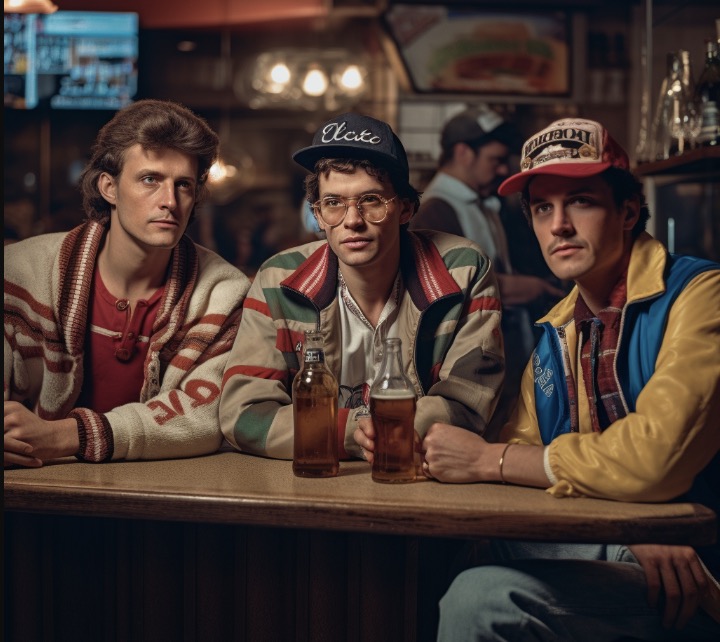
Despite the decline in keg bitters, this paved the way for new trends in the brewing industry, such as the rise of microbreweries and craft beers. Today, keg bitters may be considered rare, but their legacy lives on through beer enthusiasts who appreciate the distinct taste and history of this once-popular brew. [11][12]
7. The Rise of Lager Sales
The Rise of Lager Sales – A Market Shift in the 80s
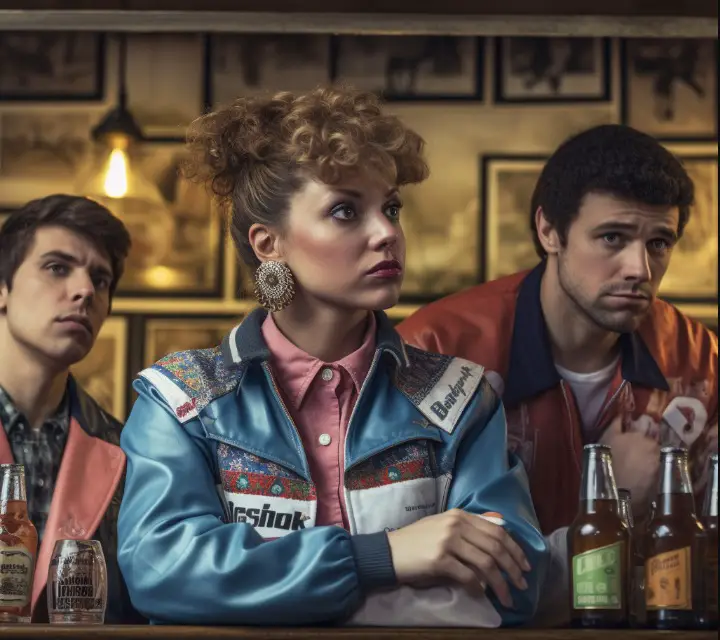
– Lager sales skyrocketed in the UK in the 1980s due to successful marketing efforts and consumer preferences shifting towards this refreshing, cold-fermented beer. By 1989, Britons consumed more lager than ales and stouts combined [1].
– During the early 1970s, lager was considered an upmarket drink and made up only a small portion of the market. However, this changed drastically over the next two decades – by 1979, lager contributed to 29% of beer sales [1].
– Increasing affordability played a significant role in the rise of lager sales. In the early 1970s, it was around 35% more expensive than bitter ale, but this cost reduced to a mere 15% premium by 1982 [3].
– Despite its growth, draught ale sales continued to outsell draught lager in pubs during the 1980s, although lager dominated supermarkets and off-licences. This contributed to the overall increase in lager sales, pushing it to the top of the beer market [1].
In conclusion, the rise of lager sales in the 1980s marked a significant shift in the beer industry, driven by marketing efforts, price adjustments, and consumer preference changes. Lager has continued to maintain a prominent position in the market ever since. [13][14]
8. Carling Black Label: The Most Popular Lager
Carling Black Label: The Most Popular Lager
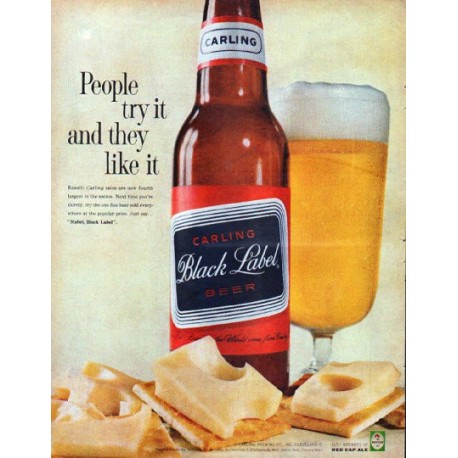
– First introduced in the UK in 1952 through a joint venture between the Brewing Corporation of Ontario (BCO) and British brewers.
– Became the UK’s most popular beer brand in the early 1980s, based on the volume of sales.
– In 1999, sold one billion pints in the UK; in 2007, 2.3 billion pints; in 2009, 4.1 billion pints worldwide; in 2011, 24.9 billion pints worldwide.
– Broke sales records in 2016, selling 7.9 billion pints in the UK alone with 83.6 billion pints worldwide.
– The largest pub chain in the UK stopped selling Carling in September 2009, then resumed sales in Q1 2011.
Originating in Canada in 1840, Carling Black Label first entered the UK market in 1952 and quickly gained popularity. By the early 1980s, it became the UK’s most popular beer brand, measured by volume sold. Sales in the UK grew from one billion pints in 1999 to an impressive 7.9 billion pints in 2016, with a whopping 83.6 billion pints sold worldwide that year.
Carling Black Label’s approachable flavor and mass appeal contributed to its immense popularity during the ’80s. Despite being removed from the largest pub chain in the UK in September 2009, it returned to their shelves in Q1 2011, further attesting to the brand’s enduring appeal. [15][16]
9. Kestrel Lager: Cheaper but Popular
In the 1980s, a period when lager took over the beer market, Kestrel Lager emerged as a popular and affordable choice for beer lovers. Accounting for over half of all beer consumption by 1989, lager became a widely enjoyed beverage option at pubs, clubs, and homes for social gatherings.
• Kestrel Lager’s remarkable popularity was primarily due to its cheaper price than well-known contemporaries such as Heineken and Carlsberg, being a more affordable choice for the masses.
• As the 1980s beer industry saw tremendous growth, Kestrel Lager successfully gained the attention of take-home customers from supermarkets and off-licences.
• Within just a year of its launch in 1980, Scottish and Newcastle’s Kestrel Lager became the best-selling take-home brand, creating a strong presence in the market.
Considering the price-sensitive nature of various consumers, Kestrel Lager proved to be a winning choice for shoppers in search of good-quality beer that didn’t break the bank.
The brand’s strong market position in a competitive landscape throughout the decade was evidence of its widespread popularity and influence on the 1980s beer culture. Despite the passage of time, the legacy of Kestrel Lager as a cheaper yet popular beer option in the 80s remains strong. [17][18]
10. Foster’s: From Australia to the UK
Foster’s Lager, a product of Australian brewing company Carlton & United Breweries (CUB), made quite the journey from Australia to the UK. Introduced in 1889 by siblings William M. and Ralph R. Foster, this iconic beer left its mark not only on the Australian market but also on international beer enthusiasts.
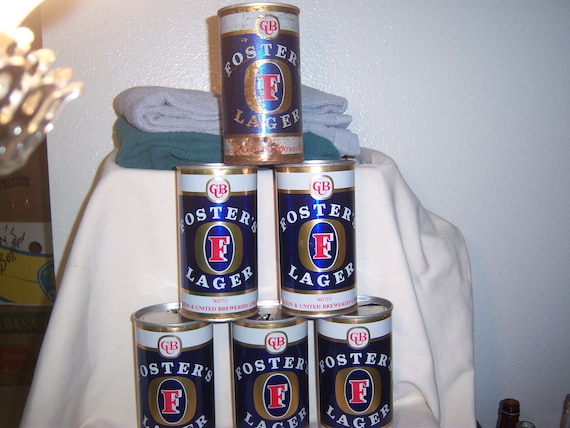
– The Foster’s brothers revolutionized the Australian beer scene with their bottom-fermented lager and innovative refrigeration technology.
– Foster’s was first exported to Australian soldiers fighting in the Boer War in South Africa in 1901, marking the beginning of the brand’s expansion.
– In the UK, Foster’s Lager gained popularity from the 1970s, becoming the largest-selling Australian beer brand globally.
– The drink’s bold taste and unique ingredients, such as cane sugar and a special yeast strain, set it apart from other beers of the time.
– Today, Foster’s Lager has a prominent presence in the UK and many other international markets, thanks to successful licensing deals with various breweries.
In conclusion, the journey of Foster’s Lager from Australia to the UK is a testament to the vision and determination of the Foster brothers.
Their unique, bold, and refreshing creation managed to conquer not only the Australian beer market, but also captured the hearts and taste buds of beer lovers in the United Kingdom and around the world. [19][20]
Conclusion
In conclusion, the 1980s laid the groundwork for the thriving craft beer scene we enjoy today.
Although mainstream brands like Budweiser, Miller, and Coors controlled over 80% of the market, the emergence of microbreweries and the popularity of imported beers like Corona in the ’80s offered beer enthusiasts with a variety of new alternatives.
The decade saw the introduction of Pale Ales, Brown Ales, Amber Ales, Wheat Beers, and Pilsners in the American beer landscape. Beers like Sierra Nevada Pale Ale and Sam Adams Boston Lager paved the way for the astounding 9,000 independent breweries we see in the US today.
The 1980s were instrumental in shaping America’s beer culture, with innovations like Ballantine IPA and other full-flavored beers setting the stage for future generations.
The insatiable appetite for new beers and the evolving palates of American drinkers played a significant role in the boom experienced in the ’80s. As we look back, it’s evident that the foundation of America’s craft beer revolution can be traced back to the creative and gutsy brewers of the 1980s who dared to forge their own paths. [21][22]

